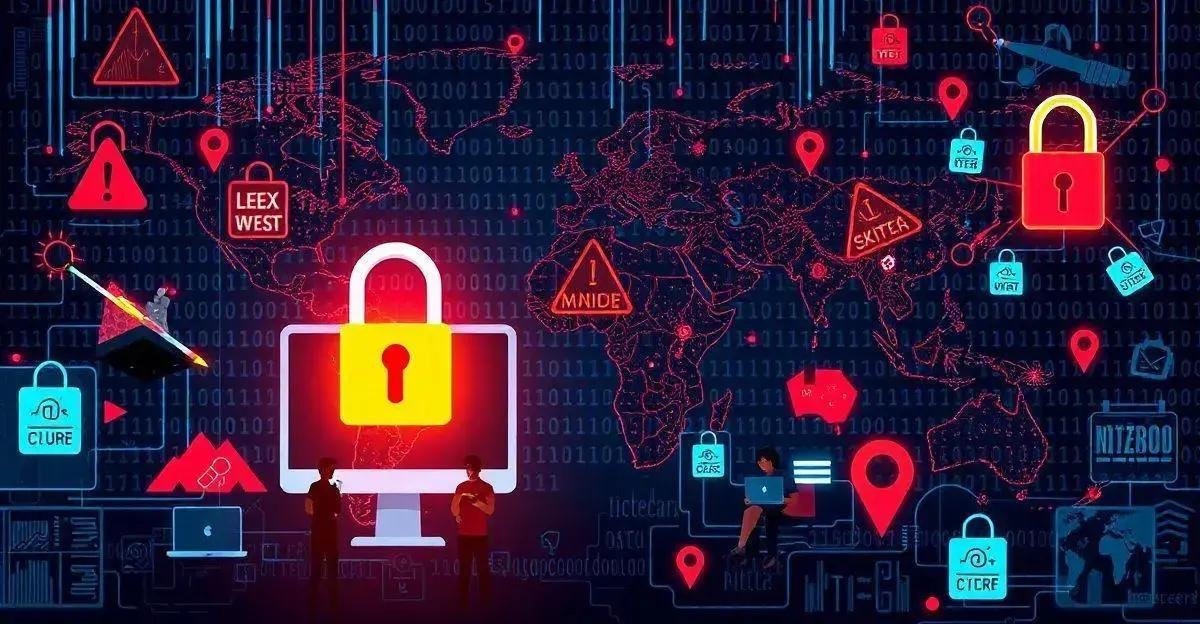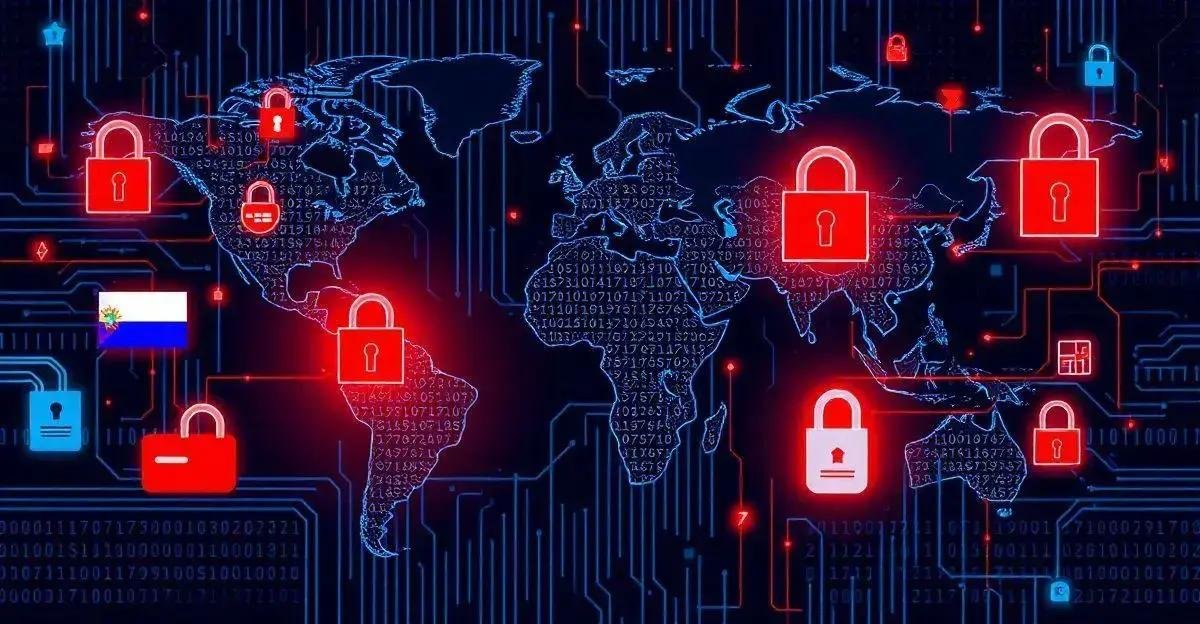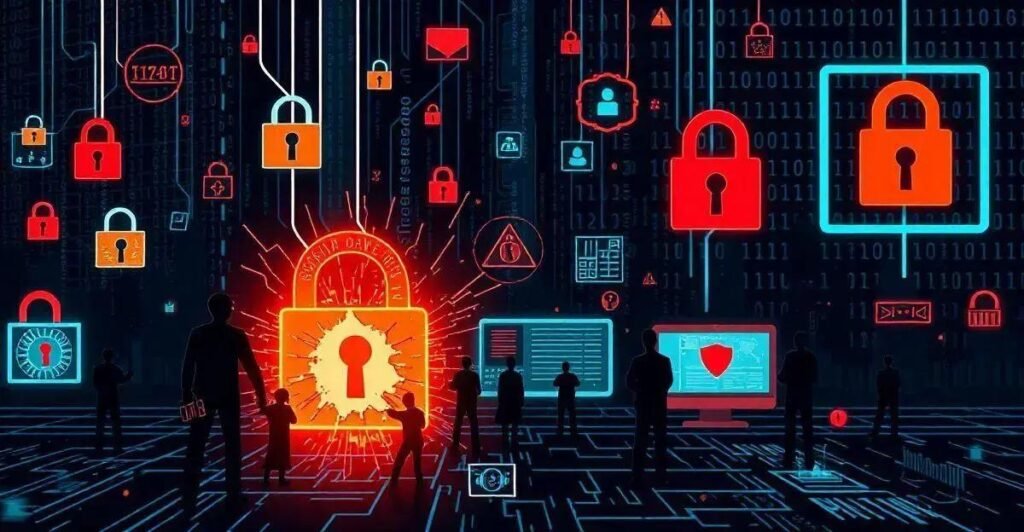As we increasingly rely on digital technologies to manage our daily lives, global cybersecurity issues have become a pressing concern.
With the rise of cyber attacks and data breaches, it’s no longer a matter of ‘if’ but ‘when’ your digital life will be compromised.
In this article, we’ll delve into the alarming global cybersecurity landscape, exploring the key threats, challenges, and solutions to help you stay safe online.
Understanding the Global Cybersecurity Landscape
Global cybersecurity issues are a result of the increasing dependence on digital technologies, making it crucial to understand the complex landscape. The internet has made it easier for individuals to connect and share information, but it has also created new vulnerabilities. As the world becomes more interconnected, cyber threats are becoming more sophisticated. With the rise of IoT devices, the attack surface is expanding, and the potential for harm is increasing. In this context, understanding the global cybersecurity landscape is essential to stay ahead of the curve.
Cyber attacks and data breaches are becoming more frequent and devastating, with far-reaching consequences for individuals, businesses, and governments. The increasing reliance on digital technologies has created a perfect storm for cybercriminals to exploit vulnerabilities. Ransomware attacks, phishing scams, and data breaches are just a few examples of the many types of cyber threats that can have severe consequences. The rise of AI-powered attacks has made it even more challenging to detect and prevent these threats.
In today’s globalized world, protecting your digital identity is crucial. With the increase in cyber attacks, it’s essential to take proactive measures to safeguard your online presence. This includes using strong passwords, enabling two-factor authentication, and keeping software up to date. Additionally, being mindful of public Wi-Fi networks and avoiding suspicious links can help prevent identity theft and data breaches. By taking these simple steps, you can significantly reduce the risk of cyber attacks and protect your digital identity.
Governments and organizations play a vital role in addressing global cybersecurity issues. Regulatory bodies can establish standards and guidelines for cyber security, while law enforcement agencies can investigate and prosecute cybercriminals. Additionally, organizations can implement robust security measures, conduct regular security audits, and provide employee training to prevent cyber attacks. By working together, we can create a safer digital landscape.
Staying safe online requires adopting best practices and strategies. This includes using antivirus software, keeping software up to date, and using firewalls. Additionally, being cautious when clicking on links or downloading attachments can help prevent malware infections. It’s also essential to use strong passwords and enable two-factor authentication. By following these best practices, you can significantly reduce the risk of cyber attacks and stay safe online.
The future of cybersecurity is uncertain, with new threats emerging every day. However, by staying informed and adapting to these changes, we can create a safer digital landscape. Artificial Intelligence (AI) and Machine Learning (ML) are being used to develop more sophisticated cybersecurity solutions. Additionally, the adoption of technologies like blockchain and the Internet of Things (IoT) can help improve cybersecurity. By embracing these innovations, we can stay ahead of the curve and protect our digital lives.
The Rise of Cyber Attacks and Data Breaches

Cyber attacks and data breaches have become a prevalent threat in today’s digital landscape. According to recent statistics, over 60% of companies have experienced a cyber attack in the past year. The rising trend of cyber attacks is attributed to the increasing reliance on digital technologies, the proliferation of IoT devices, and the sophistication of cybercriminals. As a result, it is essential to stay informed about the latest cyber threats and take proactive measures to protect your online presence.
Data breaches have devastating consequences for individuals and organizations alike. A single data breach can result in the loss of sensitive information, compromised identities, and significant financial losses. Moreover, data breaches can also damage reputations and lead to regulatory fines. To mitigate these risks, it is crucial to implement robust security measures, conduct regular security audits, and train employees on cybersecurity best practices.
In today’s globalized world, protecting your digital identity is more critical than ever. With the rise of cyber attacks and data breaches, it is essential to take proactive measures to safeguard your online presence. This includes using strong passwords, enabling two-factor authentication, and keeping software up to date. Additionally, being mindful of public Wi-Fi networks and avoiding suspicious links can help prevent identity theft and data breaches.
Governments and organizations play a vital role in addressing global cybersecurity issues.
Regulatory bodies can establish standards and guidelines for cybersecurity, while law enforcement agencies can investigate and prosecute cybercriminals. Additionally, organizations can implement robust security measures, conduct regular security audits, and provide employee training to prevent cyber attacks.
Staying safe online requires adopting best practices and strategies. This includes using antivirus software, keeping software up to date, and using firewalls. Additionally, being cautious when clicking on links or downloading attachments can help prevent malware infections. It is also essential to use strong passwords and enable two-factor authentication. By following these best practices, you can significantly reduce the risk of cyber attacks and stay safe online.
The future of cybersecurity is uncertain, with new threats emerging every day. However, by staying informed and adapting to these changes, we can create a safer digital landscape. Artificial Intelligence (AI) and Machine Learning (ML) are being used to develop more sophisticated cybersecurity solutions. Additionally, the adoption of technologies like blockchain and the Internet of Things (IoT) can help improve cybersecurity. By embracing these innovations, we can stay ahead of the curve and protect our digital lives.
Protecting Your Digital Identity in a Globalized World
In today’s globalized world, protecting your digital identity is crucial. With the rise of cyber attacks and data breaches, it’s essential to take proactive measures to safeguard your online presence. This includes using strong passwords, enabling two-factor authentication, and keeping software up to date.
Additionally, being mindful of public Wi-Fi networks and avoiding suspicious links can help prevent identity theft and data breaches. It’s also essential to monitor your credit reports and financial statements regularly to detect any suspicious activity.
By taking these simple steps, you can significantly reduce the risk of cyber attacks and protect your digital identity.
The Role of Governments and Organizations in Cybersecurity

Governments and organizations play a crucial role in addressing global cybersecurity issues.
Regulatory bodies can establish standards and guidelines for cybersecurity, while law enforcement agencies can investigate and prosecute cybercriminals.
Additionally, organizations can implement robust security measures, conduct regular security audits, and provide employee training to prevent cyber attacks.
Furthermore, governments can provide resources and funding for cybersecurity research and development, as well as establish programs to promote cybersecurity awareness and education.
By working together, governments and organizations can create a safer and more secure digital landscape.
Staying Safe Online: Best Practices and Strategies
Staying safe online requires adopting best practices and strategies. This includes using antivirus software, keeping software up to date, and using firewalls. Additionally, being cautious when clicking on links or downloading attachments can help prevent malware infections.
It’s also essential to use strong passwords and enable two-factor authentication. Furthermore, regularly backing up important data and using secure communication protocols can help protect against cyber attacks.
By following these best practices, individuals and organizations can significantly reduce the risk of cyber attacks and stay safe online.
The Future of Cybersecurity: Trends and Predictions

The future of cybersecurity is uncertain, with new threats emerging every day. However, by staying informed and adapting to these changes, we can create a safer digital landscape. Artificial Intelligence (AI) and Machine Learning (ML) are being used to develop more sophisticated cybersecurity solutions.
Additionally, the adoption of technologies like blockchain and the Internet of Things (IoT) can help improve cybersecurity. Furthermore, the increasing use of cloud computing and edge computing will require new approaches to cybersecurity.
By embracing these innovations, we can stay ahead of the curve and protect our digital lives.
FAQ – Frequently Asked Questions about Artificial Intelligence in Small Business
How can task automation benefit my small business?
Task automation frees up your team from repetitive tasks, increasing productivity and allowing them to focus on more strategic tasks.
What tools can I use for data analysis?
There are various tools available, such as Google Analytics, Tableau, and Microsoft Power BI, that help collect and interpret valuable data.
What are chatbots and how do they improve customer service?
Chatbots are virtual assistants that can answer questions and resolve problems at any time, improving the customer experience and freeing up your team.
How can I personalize the customer experience?
Through data analysis, you can better understand customer preferences and offer personalized recommendations and promotions.
Why is customer feedback important?
Feedback is essential for identifying areas that need improvement and adjusting your service strategy to ensure customer satisfaction.
Is artificial intelligence accessible to small businesses?
Yes, there are various AI solutions that are accessible and scalable for small businesses to improve efficiency and customer service.
